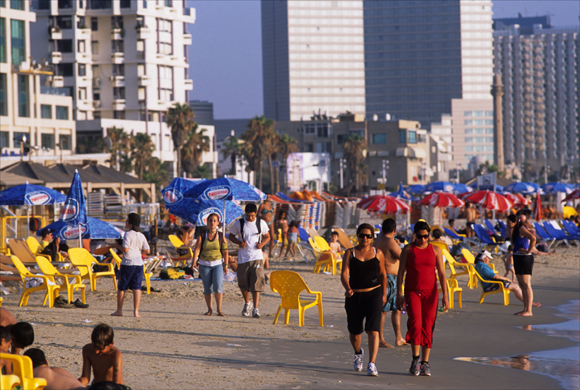Recreational sun exposure, use of black hair dye, being hospitalized for infection and having a close relative with blood cancer all increase the risk of developing B-cell non-Hodgkin lymphoma (NHL) among people of Middle Eastern descent, according to a new study.
But the regional study — the first of its kind — also identified risk factors specific to Palestinian Arabs and Israeli Jews, suggesting that differences in lifestyle habits, income levels, environmental factors and medical systems may also influence the likelihood of contracting the disease.
The study, “Ethnic variation in medical and lifestyle risk factors for B cell non-Hodgkin lymphoma: A case-control study among Israelis and Palestinians,” appeared in PLOS One.
While researchers have extensively studied the disease most among North Americans and Europeans, it’s the inhabitants of the Middle East who suffer the world’s highest lymphoma rates. In fact, as of 2012, Israel ranked first in the world in NHL incidence, according to the World Health Organization; nearby Lebanon is second. NHL is also Israel’s fifth most common malignancy; among Palestinians living in the West Bank, the disease ranks eighth.
Given the geographic proximity — as well as the genetic and cultural diversity — of Israelis and Palestinians, an analysis of the risk factors for NHL could help scientists understand the genetic and environmental factors associated with the development of this disease.
Israeli and Palestinian researchers at Jerusalem’s Hadassah University Hospital examined the medical history, and environmental and lifestyle factors among 823 Palestinian Arab and Israeli Jewish patients with B-cell NHL and compared them to 808 healthy controls.
Their findings revealed a link between the disease and nine or more hours of recreational sun exposure, black hair-dye use, a history of hospitalization for infection and having a first-degree relative diagnosed with blood cancer.
But when the researchers examined each group alone, they found Palestinian Arabs to be at increased risk if they performed gardening or had a history of herpes, mononucleosis, rubella or blood transfusions. For some reason, these factors didn’t seem to endanger Israeli Jews — whose own unique risks for NHL included growing fruits and vegetables and having autoimmune diseases.
The researchers think this might be a product of differences in diet, cultural habits, socioeconomic levels, environmental and housing conditions, medical systems and reporting patterns. But they stress that gene-environmental interactions — which occur when distinct environmental exposures act differently in distinct genetic backgrounds — could also explain some of the differences.
“Apart from the scientific contribution that this research provides in terms of understanding risk factors for NHL, the study entails an important research cooperation among many institutions,” the study’s lead author, Ora Paltiel, said in a news release. “The study provided opportunities for training Palestinian and Israeli researchers, and will provide for intellectual interaction for years to come.”
Paltiel, director of the Hebrew University-Hadassah Braun School of Public Health and Community Medicine, added that “the data collected will also provide a research platform for the future study of lymphoma. Epidemiologic research has the potential to improve and preserve human health, and it can also serve as a bridge to dialogue among nations.”


